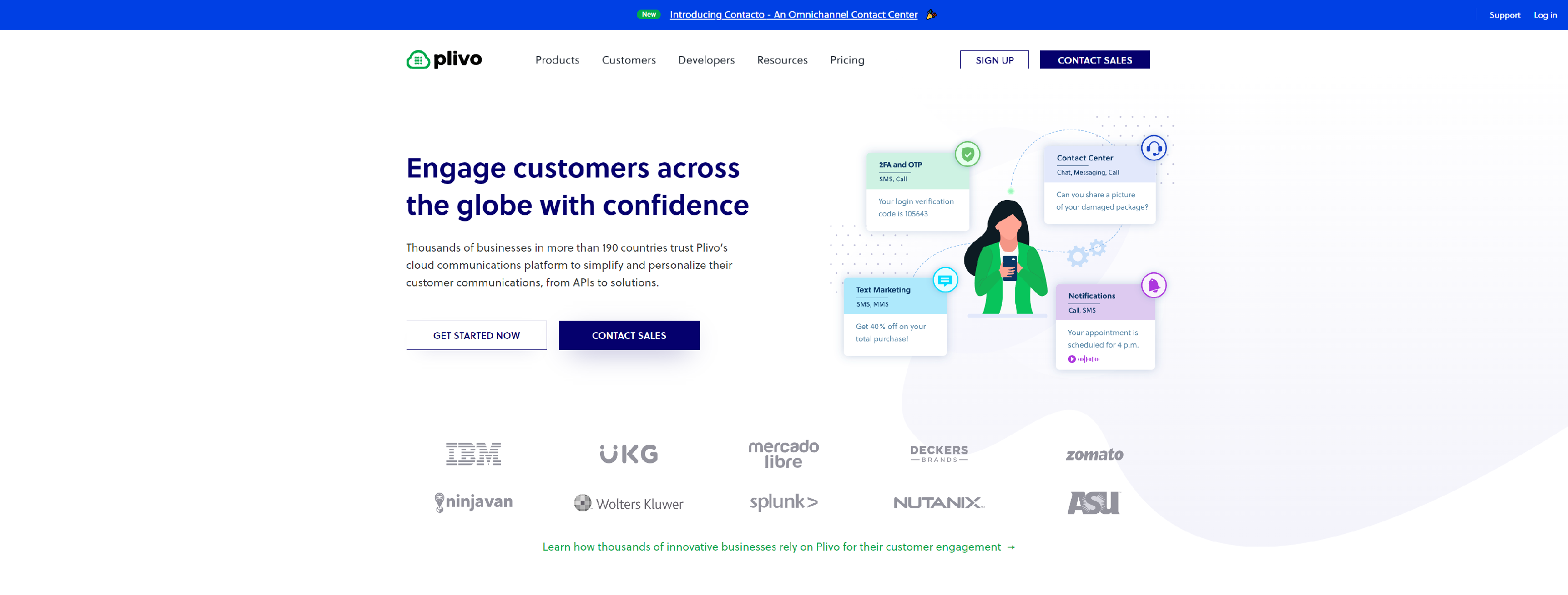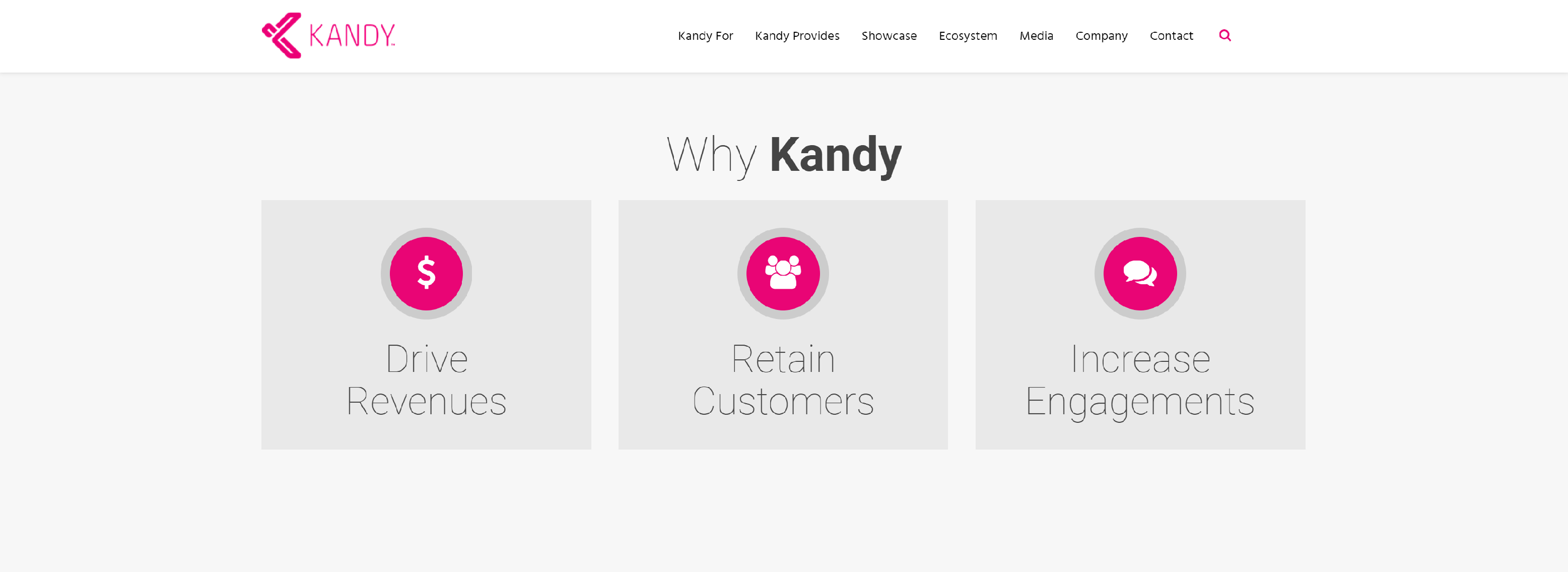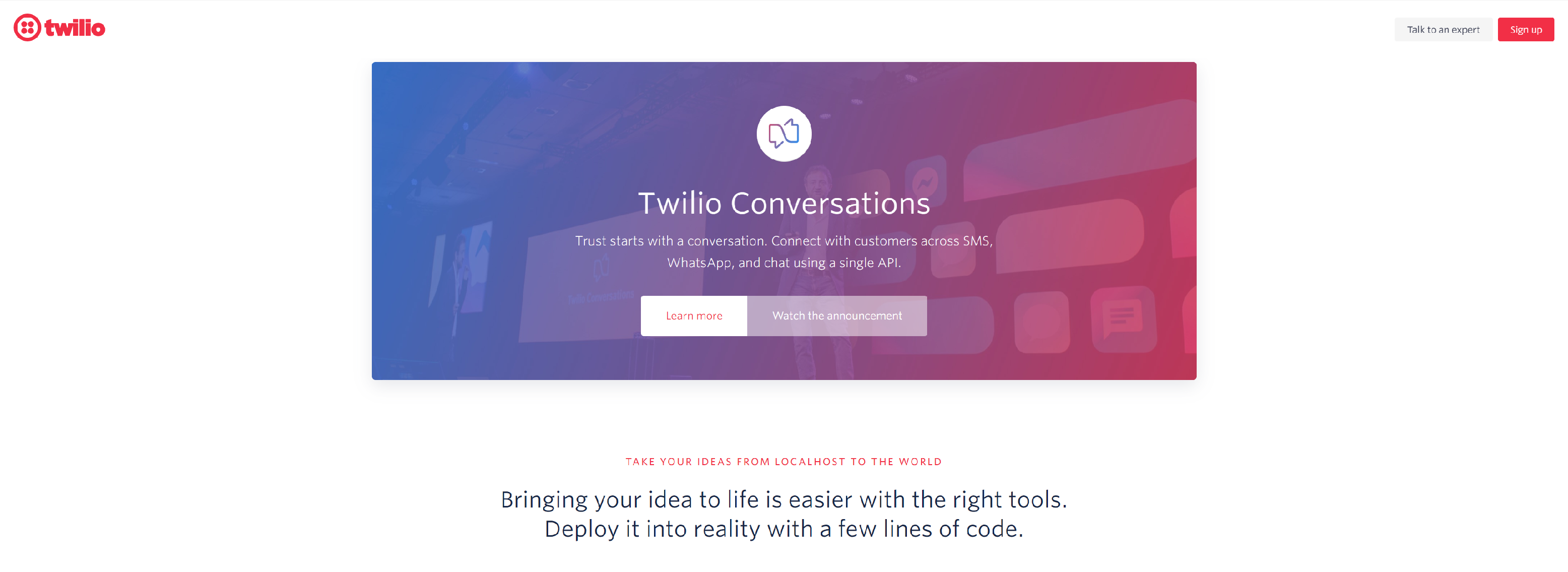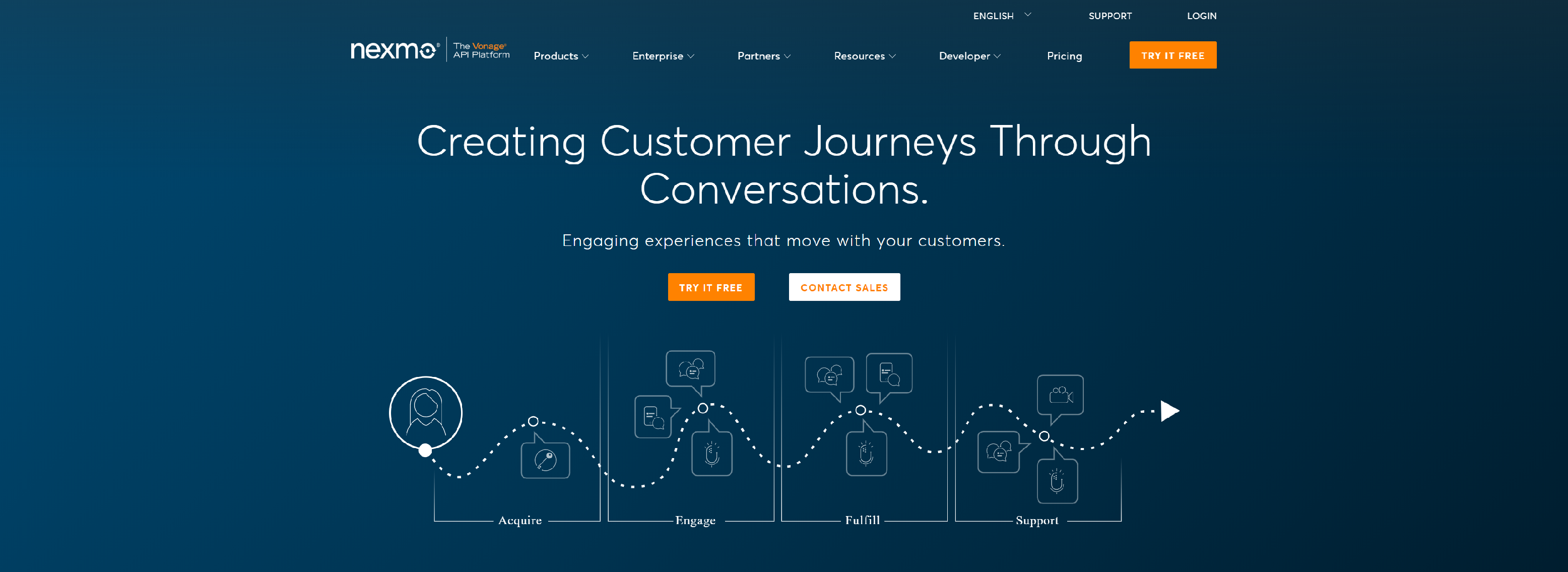Everyone is talking about cloud: Cloud computing. Cloud technology. Cloud communications. But what does cloud actually mean? Cloud is essentially a new data consumption model; Cloud offers infrastructure or applications as a service. And the principle of cloud is to make the location of your infrastructure or applications completely irrelevant. Cloud means that it no longer matters where your data is stored; it is available to you, on-demand, through a networked device.
Cloud embraces the consumption model; it allows you to consume infrastructure on a “pay-by-the-drink” basis, rather than the heavy costs associated with building your own platform.
The benefits are obvious:
- Cloud allows you to grow your business faster, or shift resources from one team to another without capital investment
- Cloud lowers the total cost of ownership
- Infrastructure and applications are upgraded and maintained such that users have access to the latest features and functionality
- The resilience and security of the cloud platform is typically superior to an on-premise solution
Where does cloud communications fit in?
Cloud communications is an application within this new framework. Organizations of any size can now access communications infrastructure and services that were previously only available to the very largest and highly resourced companies.
As you may imagine, cloud has completely revolutionized the communications industry. Organizations now have a choice: They longer need to rely on costly, legacy on premise communications systems. Cloud offers brand new services and applications, in real-time, with minimal risk. And you only pay for what you need.
But in the case of cloud communications, it’s not about choosing between either “cloud” or “on premise”. You don’t have to put all of your eggs in the cloud or on premise basket. For companies that want to maintain control of their communications environment, there is also a hybrid option, whereby best of breed next generation communications services can be accessed from the cloud, while the core environment remains on premise. Some see this hybrid UC management model as the best of both worlds.
Cloud communications challenges
It should be noted that while new communications services and applications are made available in the cloud, telephone calls still flow through the enterprise network and therefore need to interact with the PSTN – the PSTN doesn’t go away.
And, as with all cloud related technology, there are risks associated with cloud communications:
- Data security is a potential challenge
- There is a barrier to exit if you move 100% to the cloud (less if you adopt a hybrid approach)
- Lack of flexibility can be seen as an inhibitor, if the cloud provider doesn’t allow full customization
Reputable cloud providers address these issues, so if you are considering a move to cloud communications, it’s important to do your research and make sure you choose a cloud service provider that is addressing these issues.
PLIVO

Plivo’s SMS API and Voice API platform enables businesses to communicate with their customers on a global scale.
- SMS API Platform
- Voice API Platform
- Zentrunk
- Number Lookup
- Phone Numbers
KANDY

Kandy Integrate cloud based voice, video, messaging, chat and collaboration into any app, service or business process.
- CPaaS: Everything enterprises need in a CPaaS service offering to achieve superior customer engagement experiences within software apps and workflows – APIs, WebRTC, Marketplace and a lot more
- UCaaS: A full suite of cloud-based unified communication services including contact center that enable the transition of business communications to the cloud
- Wrappers: Enabling Enterprises to significantly improve customer engagement experiences via easy, quick start applications
- WebRTC & More: Deploy highly engaging communications applications for many different applications
VOXIMPLANT

Сloud platform for developing real-time communication apps with full control over voice and video. Voximplant cloud application engine provides developers with a way to control every call leg using JavaScript logic.
- Logging
- Push Notifications
- PSTN
- SIP
- Text-to-Speech
- Phone Numbers
- Speech-to-text
- SDKs
- Voice Recording
- Voicemail Detection
- HTTP API
- Automated Call Distributor
- Cloud JS
- Call Lists
- Cloud IDE
- Predictive Dialing System
- Cloud Debug
TWILIO

Cloud communications platform for building SMS, Voice & Messaging applications on an API built for global scale.
- Communications on a single, scalable platform
- A platform that works with your business, not against it
- Deliver exceptional customer experiences
WHISPIR

The Whispir platform lets you automate, personalise and layer your communications with smart workflows.
- Communication designed with you and your clients’ needs in mind
- Put your ideas into action with a few clicks
- Handle your contacts like a boss
- Mine your data to get useful insights
NEXMO

Nexmo helps growing startups and agile enterprises enhance their customer experience and realize new business outcomes at scale.
Telecom Capabilities:
- Voice Quality Engine
- Messaging Quality Engine
- Phone Numbers
- Adaptive Routing
- Outbound Network
- Compliance Engine
Enterprise Capabilities:
- API Consulting
- Data & Security
- Dedicated Support Engineer
- Content Delivery Networks (CDNs)
- Technical Account Management
- Enterprise Grade Reliability
Management Tools:
- Monitoring & Logs
- Authorization
- Analytics & Billing
- Management API
BANDWIDTH

Voice, Messaging, and 911 Access Built for the Enterprise. Get Better Quality, Rates, and Control on Our Tier 1 Network.
- Bandwidth can help you securely embed voice calling directly into your application, network, or product
- Bandwidth messaging lets you build SMS, MMS, and Toll-Free Texting into products and applications
- Connect your phone numbers, product, or application instantly to 911 with fast, accurate emergency routing
- Expand your communications solution with automated number ordering, porting, and account management
TELNYX

Telnyx built a communication platform that enables anyone to deliver enterprise-grade real-time communications over the internet.
- Call Tracking
- Contact Center
- Two Factor Authentication
- Managed Services
- UCaaS
- SMS Customer Support
- Instant Lead Alerts
- Cloud IVR
- Account Notifications
- Appointment Reminders
- Conversational AI
- Multi-Cloud
Technologies
When selecting a cloud communications vendor, we recommend that you don’t just look at the price. Of course the total cost benefit will be the major driver of your decision, but you need to look at the technology factors that cloud providers are using to deliver services, as these will have an impact on costs over the long term.
Virtualization and Underlying UC Technologies
What technology is the cloud provider using in their data center?
There are two key things to look for:
1. What technology vendor has been selected by the cloud provider for their UC technology?
Have they selected a major vendor, such as Cisco or Broadsoft, (both of whom have developed strong cloud solutions around the full suite of UC applications, have a long history of supporting hosted solutions and have strong cloud communication roadmaps)? Or has the cloud provider developed its own platform, or selected a platform from a minor vendor with limited hosted experience or a questionable UC roadmap?
- One of the reasons that enterprises have resisted moving away from owning their own on-premise communications infrastructure is because of a lack of flexibility
- You need to ensure that the underlying vendor technology is going to provide the same level of applications and features as for their on premise alternatives. Several leading UC vendors have only launched hosted solutions quite recently and their commitment to the cloud technology is caught in a “Catch-22” situation. They have launched a solution, but without a significant adoption they won’t be able to continue to invest; yet market success cannot be achieved without a clear commitment over many years.
- Look for which other providers are also using the vendor’s cloud technology. The more volume on that technology, the greater the chance of its longevity and the more R&D investment will be forthcoming.
2. What technology vendor has been selected by the cloud provider for their data center?
Modern data centers are fully virtualized and it should be mandatory that your cloud provider is operating out of a virtualized data center. The benefits of virtualization are significant, in terms of costs and efficiency. More information on this can be found in the section on redundancy and resilience.
Dedicated vs Shared Infrastructure
The discussion about cloud versus on premise is far less important with IP communications. The location of the network infrastructure doesn’t really matter, since an on premise system may in fact be resident in a 3rd party data center.
What is much more significant is whether the cloud platform is dedicated infrastructure, or shared infrastructure. In other words, is the cloud provider using a big central switch to support multiple customers (that is a shared infrastructure), or are they providing dedicated infrastructure (that is, each customer has their own IP-PBX and UC applications)?
Pros and Cons of Dedicated vs Shared
- There is significant advantage from a dedicated model, as customers can fully customize their environment, as though it were an on premise system. In other words, the customer can create their own custom solution in the cloud. They can update their platform if they want to (or not) or add new services (or not), without this impacting other customers.
- Customers effectively get the best of both worlds (cloud and on premise) – a subscription-based cost structure, without the limitations normally associated with a cloud service.
- Naturally, there is a higher cost for dedicated infrastructure and it is much more cost effective for larger organizations. But with virtualization, these cost differences are narrowing. And of course the total cost/benefit of ownership, including the increased level of flexibility, means that dedicated infrastructure is seen by many companies to be the preferred solution.
- In the case of shared infrastructure, a single customer has much less flexibility in terms of customization. They are typically offered a highly standardized set of services. They are forced to take upgrades when the provider decides. They cannot add features or applications without impacting all other users.
- The barriers to exit for a shared infrastructure platform are also higher, as the cost and effort to migrate away from the provider is more complex (i.e. your data is shared).
- But of course, the shared infrastructure model is typically cheaper and can be completely suitable to smaller enterprise customers.
Examples of Dedicated vs Shared Infrastructure
1. IPCentrex is an example of shared infrastructure
- Broadsoft, Microsoft 365 and Sonus are typical examples of shared infrastructure (i.e. IP Centrex)
- It is interesting to note that Broadsoft has recently released a “dedicated” infrastructure model
2. Cisco HCS is an example of dedicated infrastructure
- Cisco has developed a dedicated cloud communications model called Hosted Collaboration Solution (HCS)
- Cisco HCS is a truly dedicated infrastructure solution architecture, based on each customer having a full suite of dedicated UC applications, but wrapped up in an end-to-end cloud architecture, with sophisticated management and highly flexible design customization
- Many of the world’s leading communications providers have adopted Cisco HCS and they are using this architecture to differentiate themselves from the OTT players, who will typically use shared infrastructure
When selecting a cloud vendor, always ask whether their solution is shared or dedicated.
What is the best choice for you?
- If you are a small-medium enterprise, without the need for highly customized requirements, then a shared infrastructure solution may be satisfactory
- If you are a medium-large enterprise, with special requirements, or a desire to retain a high degree of flexibility, then you should select a provider who can offer a dedicated architecture
- If you are a multi-national company, and you are looking to move to the cloud, then it is mandatory to go with dedicated infrastructure
Redundancy and Resilience
Business continuity is everything when it comes to enterprise communications. If a customer cannot contact you, then they will call the competition.
It goes without saying that moving to a cloud communications solution should result in an improvement of redundancy and resilience, or at a minimum a lower cost to achieve a similar high level of business continuity. Cloud service providers should be able to use their economies of scale and technical scope to lift levels of business continuity. In many cases, enterprises cannot justify the investment in fully redundant networks and infrastructure. So the move to the cloud is a way to achieve levels of business continuity that only very large enterprises can achieve.
However, resilience and redundancy for cloud communication fall into two main areas and while most cloud providers achieve success in the first (Infrastructure), they don’t deliver on the second (Access):
Infrastructure
Resilience in infrastructure is achieved by removing any single point of failure. To achieve this, every element of network or application infrastructure is replicated and maintained in a hot stand-by mode to take over automatically if a system fails.
Most cloud communications providers not only offer this one-for-one redundancy, they also offer geographic redundancy to avoid catastrophic failure from, say, fire or natural disasters. A second data center is located in a completely different part of the country (geographic separation) to avoid any risk from disasters.
When evaluating cloud providers, you should look at both their elimination of a single point of failure and also their disaster recovery capabilities.
Access to the PSTN
In exactly the same way, companies need to ensure that there is no single point of failure in accessing the PSTN. This is achieved by ensuring that any location has at least two independent PSTN access paths.
A common design will have both a central network trunk as well as a local gateway access point. If the central network connectivity is lost, or becomes over-loaded, then the local gateway will automatically have calls re-directed to it.
When evaluating a cloud provider, you should check to see if they are providing this access redundancy. In many cases, less reputable cloud providers will offer a lower monthly fee, but only provide a central SIP trunk for PSTN access.
Cloud Communications Management
Management is one of the most important factors to look for when selecting a cloud communications vendor. Modern UC management systems allow providers to both improve their SLAs to you, as well as lower their operating costs – meaning a win-win for both supplier and customer.
If your cloud vendor doesn’t have a UC management strategy, then they are most likely using “labor-arbitrage” (i.e. sourcing cheaper labor from overseas) as their business model. This didn’t work with the outsourcing disasters in the 1980s and 90s (N.B. companies just exported their IT problem. Costs were less, but the service levels declined, which fixed nothing) and there’s no reason to believe that labor-arbitrage will work with UC communications.
FCAPS is a recognized framework for network management, which stands for fault, configuration, accounting, performance, security. The purpose of the FCAPS model has been to break down the major operational functions of a network system.
The same FCAPS principles apply to cloud communications management. Any cloud communications platform has to have resources assigned to perform the 5 key precepts of FCAPS, if it is to operate effectively. Without FCAPS in place, your provider will not be able to deliver high SLAs to you.
But modern, advanced UC management is importantly also the key to maintaining strategic control over your cloud communications architecture. It provides the lynchpin to flexibility through advanced web-based portals.
Cloud communications management means that enterprises are able to easily and securely access customized portals to successfully administer, monitor and report on all their users, devices and cloud services and applications in real-time, from a central point of control. It includes the ability to decentralize administrative tasks down to departmental levels, and offer end users their own self-service capabilities from mobile handsets.
The end result is a highly automated cloud-based communications platform that is still controlled and “owned” by users, which promotes inter-company collaboration, improved business performance, and growth.
Why Cloud Communications
Cloud communications must not be confused with the wave of communications outsourcing that took place in the 1980s. Cloud communications is about removing complexity and managing costs, while still retaining strategic control. This is hugely different to the traditional outsourcing model, and much more compelling.
There are 5 key reasons that organizations are choosing to move their communications infrastructures to the cloud:
1. The economics have changed since the nascence of unified communications (UC) and the virtualization of communications.
- UC is more complex and hence companies avoid having to invest in staff training. Much of the technical complexity comes from the need to do tasks on an irregular basis. If you are doing a complex task every day, then you develop and maintain the skills. If you only do those tasks once or twice a month or quarter, then it’s much more difficult to retain the skills level. A cloud provider has employees that are looking after many customers and so develop and maintain skills because they do these tasks day-in and day-out. With cloud communications, companies can effectively access these skilled resources on demand and they don’t need to invest in these resources as full-time employees.
- Virtualization has transformed the economics of data centers. Both capital and operating costs are reduced substantially with virtualization. Rather than companies having to invest in their own data centers, where size and scope may limit this as a possibility, cloud communications immediately makes these benefits to the enterprise.
2. Consumption models mean you can now cap your costs, which removes the risk of exploding operational expenditure.
3. Cloud brings much more flexibility in terms of scale. You can increase or decrease capacity easily without being committed to major upgrade costs.
4. Cloud accelerates your access to new productivity tools.
5. Cloud as a theme has generally become acceptable to the CIO, so cloud communications is a natural extension.
Why Management Matters
When choosing the right cloud communications solution provider, make sure that management is included. So, how should you set about choosing the right cloud communications provider for your business?
In order to select the cloud communications solution that best suits your needs, it’s important to fully understand your own objectives first. It may be worth investing in a stand industry RFP template to guide you. In our view, management is the key to a successful cloud communications deployment.
Management makes the difference between:
- Maintaining strategic control or losing control
- Maintaining flexibility vs. losing flexibility
- An easy migration vs. a painful, disruptive, and expensive migration
- A staged and controlled evolution to the cloud vs. a rip and replace strategy
- Accessing new features quickly and easily vs. painful upgrades that are forced on you that you don’t want
So make sure that whatever solution you choose, you have access to:
- Advanced web portals that allow you to manage your own users and their UC services
- Tools to automate the process of rapidly on-boarding users and phones to the new platform
- A real-time centralized view of all cloud communications services and applications
- The ability to roll out new services in real-time
- Multiple layers of decentralized administration to share MACD tasks across the company
- Mobile access to a self-care portal for end users to manage their own UC settings in real-time
Features & Benefits
1. Flexible design to meet your feature requirements: 100% feature parity
It’s important that the cloud communications platform includes 100% feature parity, and rapid support of new versions, to make sure that all features and settings on the wide range of managed UC devices are available. This approach ensures the rapid support for new versions and features in the UC applications and allows skilled technicians – familiar with the UC applications – to continue to manage and troubleshoot. They can use existing skills alongside the automation provided.
2. Support for hybrid cloud
Make sure that the cloud communications platform allows you to easily manage a hybrid environment; where communications applications are being accessed from both the private and public cloud.
3. Migration automation
The cloud communications platform should also offer a highly automated migration service. Migration tools play a critical role in automating the process of on-boarding users and devices from a legacy system to the new cloud environment. This is hugely important as it reduces the time and cost associated with on-boarding, as well as eradicating any risk of data slippage. It also enables enterprises to take a staged migration approach, whereby the new cloud platform is built over the top of the legacy environment, and logical groups of users are migrated over time, in a controlled manner.
4. Enterprise wide dial plan management
Dial plans are another important factor to consider. The cloud communications platform should enable an organization to adopt a standard industry dial plan, or fully customize their own, or have no dial plan management at all and implement a dial plan manually. The platform should be able to manage multiple country dial plans as a single workflow, with a high degree of flexibility.
5. Portal customization
The cloud communications platform should support complete customization of the environment, with a range of controls to manage how every feature and setting is made available, such as GUI management, user validation, field display controls. Views should be configurable to meet business and end user needs.
6. Role-based access control
The cloud communications platform should offer role-based access to give granular control over what permissions and capabilities a user has, which drives what they can see and do in the system. The organization should be able to define any number of roles, with a range of controls for feature management and portal views, including control over menu presentation, hierarchical based permissions, access per entity and access per field.
7. Service management
With a cloud communications platform, the end user should be at the center of the service management data model. Each business unit should be able to be partitioned, with their own fully customized set of user/service profiles. The user and service profiles should define the technical orchestration of network configuration, service activation and device provisioning processes to deliver fully integrated UC service management.
8. Security of data
The cloud communications platform should be built to support a variety of security mechanisms to ensure the platform adheres to required security policies.
9. Redundancy
For cloud communications platforms, a full geo-redundant model should be in place, with full support for load balancing across the cluster.
10. Reporting
The cloud communications platform should be able to integrate with external reporting and service assurance systems to extract comprehensive sets of up to date information in the UC domain.
11. Self-care portal
The cloud communications platform must be able to deliver a multi-service, end user self-care portal, to allow the full range of communications services and devices to be self-managed by users. This needs to be possible in real-time, from a highly customizable, highly intuitive, self-care portal.
12. Multi-vendor support
Finally, the cloud communications platform should support UC applications and SIP devices from multiple vendors, to enable organizations to benefit from best of breed technologies.
Solution Providers
There are four different types of cloud communications provider:
1. Tier-1 Telecommunications Company
Traditional communications service providers (also known as Carriers). Every country has at least one tier-1 communications provider. The benefit of taking a solution from a traditional service provider, is that the service provider typically owns the PSTN and wireless networks and hence can provide a quality of service across all elements of the end-to-end session, no matter what form of communication (voice, video, data, etc.)
2. Specialist Cloud Service Providers
There is a raft of specialist hosted cloud service providers springing up across the world. The benefit of selecting a solution from a special hosted cloud service provider is that you will receive best of breed voice and data communications services, at a cost effective price point.
3. Managed Service Providers
Managed service providers tend to be systems integrators as well. The benefit of choosing a cloud communications solution from a managed service provider is that they have traditionally provided the on-premise systems integration solution, so they are technically well equipped to provide a highly customized solution.
4. Over the Top (OTT) Players
a. Amazon
b. Google
c. Microsoft / Skype
The benefit of choosing a cloud communications solution from OTT players, is that they will provide a highly user-focused solution at a very competitive rate. Their economies of scale will be superior to traditional providers and their online customer service capabilities will be superior.